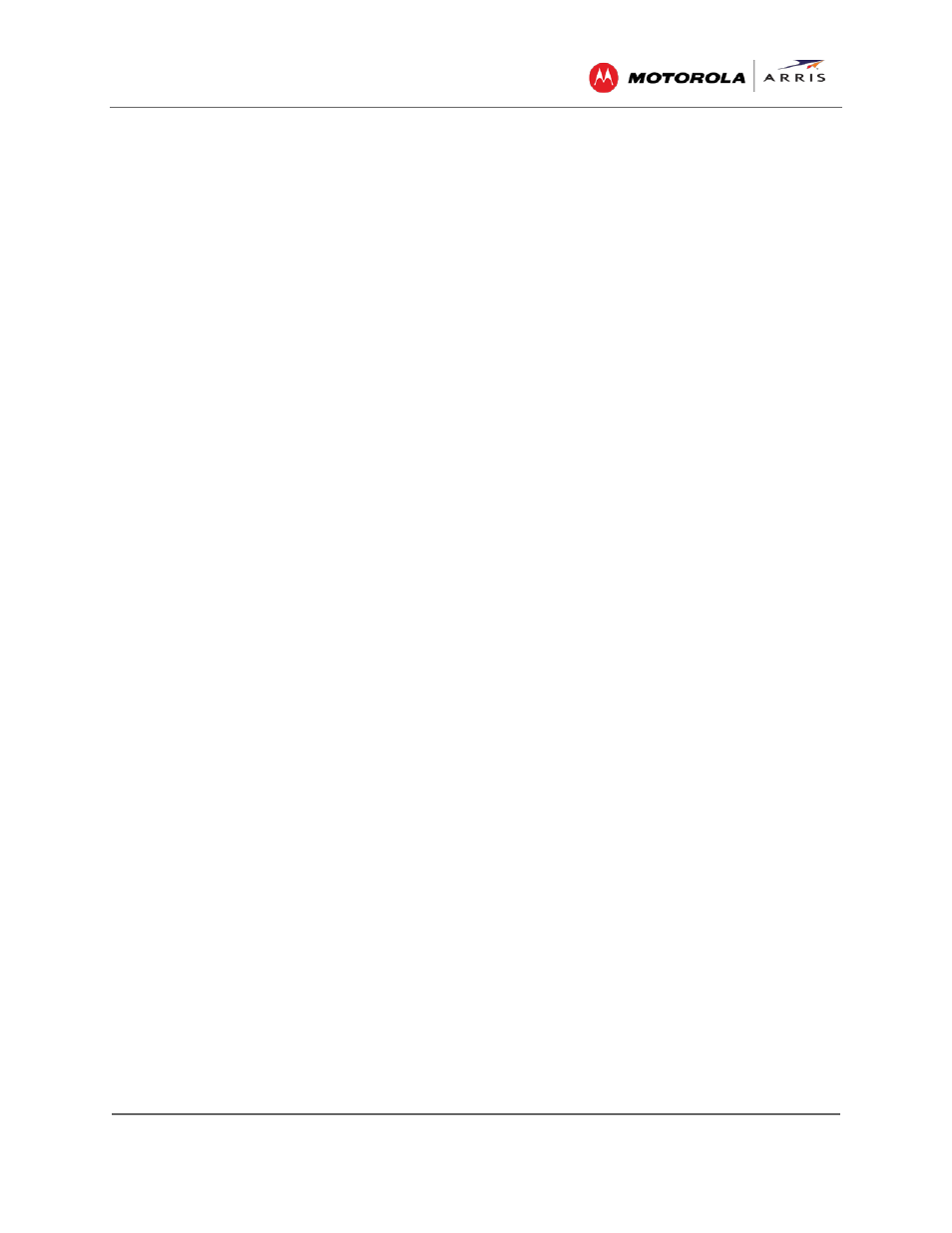ARRIS SBG6782 AC User Guide User Manual
Page 5

Safety and Regulatory Information
SBG6782-AC Wireless Cable Modem & Router • User Guide
iii
365-095-23865 x.1
FCC Radiation Exposure Statement
This equipment complies with FCC radiation exposure limits set forth for an uncontrolled environment. To
comply with the FCC RF exposure compliance requirements, the separation distance between the
antenna and any person’s body (including hands, wrists, feet and ankles) must be at least 20 cm (8
inches).
This transmitter must not be co-located or operating in conjunction with any other antenna or transmitter
except those already approved in this filing.
The availability of some specific channels and/or operational frequency bands are country dependent and
are firmware programmed at the factory to match the intended destinations. The firmware setting is not
accessible by the end user.
INDUSTRY CANADA (IC) STATEMENT
This device complies with RSS-210 of the Industry Canada Rules. Operation is subject to the following
two conditions:
• This device may not cause interference, and
• This device must accept any interference, including interference that may cause undesired operation of
the device.
CAN ICES-3 (B)/NMB-3 (B)
In Canada, RLAN devices are restricted from using the 5600-5650 MHz frequency band.
CAUTION: To reduce the potential for harmful interference to co-channel mobile satellite systems, use of
the 5150-5250 MHz frequency band is restricted to indoor use only.
High power radars are allocated as primary users (meaning they have priority) of 5250-5350 MHz and
5650-5850 MHz frequency bands. These radars could cause interference and/or damage to License
Exempt–Local Area Network (LE-LAN) devices.
IC RADIATION EXPOSURE STATEMENT
IMPORTANT NOTE: This equipment complies with IC radiation exposure limits set forth for an
uncontrolled environment. This equipment should be installed and operated with a minimum distance of
20 cm between the radiator and your body.
AVIS D'INDUSTRIE CANADA (IC)
Cet appareil est conforme à la réglementation RSS-210 d'Industrie Canada. Son utilisation est assujettie
aux deux conditions suivantes :
• Cet appareil ne doit pas causer d'interférences et
• Cet appareil doit accepter toute interférence reçue, y compris les interférences causant un
fonctionnement non désiré.
CAN ICES-3 (B)/NMB-3 (B)
Au Canada, les appareils de réseau local sans fil ne sont pas autorisés à utiliser les bandes de fréquence
5600-5650 MHz.
AVERTISSEMENT: afin de réduire les risques de brouillage préjudiciable aux systèmes de satellites
mobiles utilisant les mêmes canaux, les dispositifs fonctionnant dans la bande 5150-5250 MHz sont
réservés uniquement pour une utilisation à l'intérieur
Les radars à haute puissance sont définis en tant qu'utilisateurs principaux (c.-à-d. prioritaires) des
bandes de fréquences 5250-5350 MHz et 5650-5850 MHz. Ces radars peuvent causer de l'interférence
ou des dommages susceptibles de nuire aux appareils exempts de licence–réseau local (LAN-EL).
